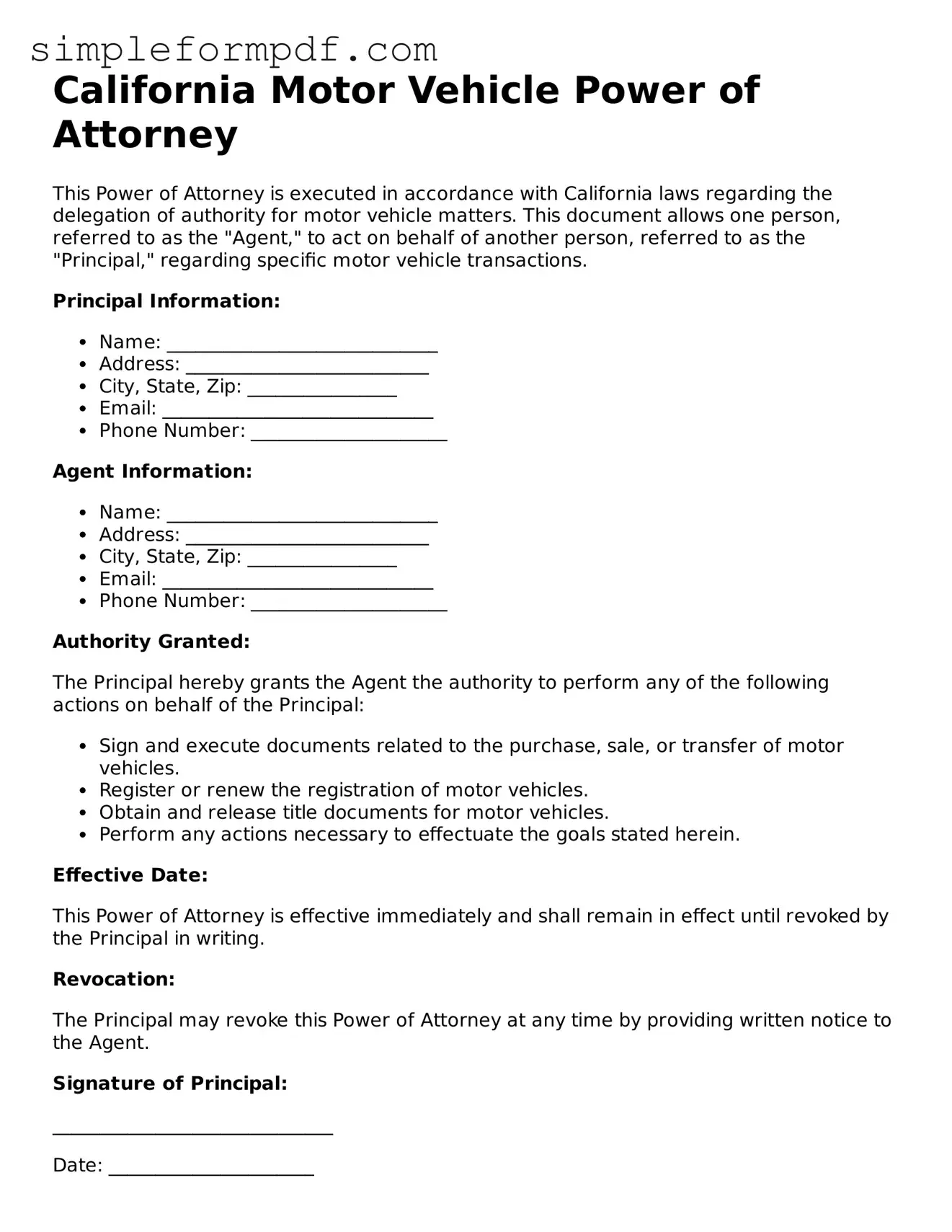California Motor Vehicle Power of Attorney
This Power of Attorney is executed in accordance with California laws regarding the delegation of authority for motor vehicle matters. This document allows one person, referred to as the "Agent," to act on behalf of another person, referred to as the "Principal," regarding specific motor vehicle transactions.
Principal Information:
- Name: _____________________________
- Address: __________________________
- City, State, Zip: ________________
- Email: _____________________________
- Phone Number: _____________________
Agent Information:
- Name: _____________________________
- Address: __________________________
- City, State, Zip: ________________
- Email: _____________________________
- Phone Number: _____________________
Authority Granted:
The Principal hereby grants the Agent the authority to perform any of the following actions on behalf of the Principal:
- Sign and execute documents related to the purchase, sale, or transfer of motor vehicles.
- Register or renew the registration of motor vehicles.
- Obtain and release title documents for motor vehicles.
- Perform any actions necessary to effectuate the goals stated herein.
Effective Date:
This Power of Attorney is effective immediately and shall remain in effect until revoked by the Principal in writing.
Revocation:
The Principal may revoke this Power of Attorney at any time by providing written notice to the Agent.
Signature of Principal:
______________________________
Date: ______________________
Witness/Notary Public:
______________________________
Date: ______________________
